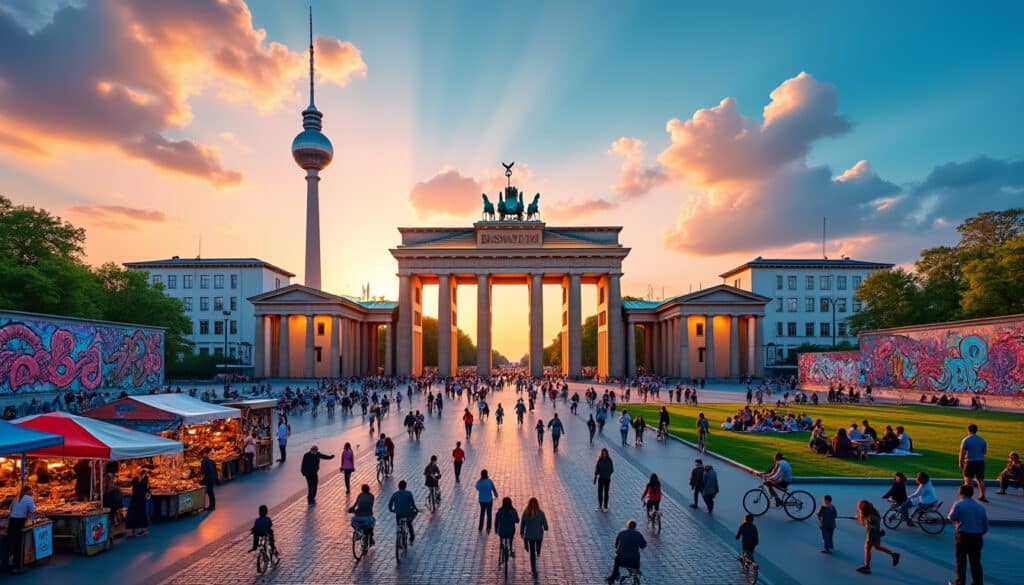Berlin, a dynamic city that never sleeps, is not only famous for its rich history, vibrant culture, and bustling nightlife, but also for its intricate relationship with time. As a city that exists at the crossroads of the past and the future, understanding the nuances of time and time zones here is essential for residents and visitors alike. With the Berlin Clock standing as a testament to the city’s innovative spirit, Berlin’s approach to time is as unique as its identity. Whether navigating through its streets or planning virtual meetings across time zones, understanding Berlin’s temporal rhythms can enrich any experience in this iconic metropolis.
The Berlin Clock: A Unique Timepiece
The Berlin Clock, also known as the “Uhr der fließenden Zeit” or “Clock of Flowing Time,” is a marvel of modern engineering and design. Installed in 1975 by designer Dieter Binninger, this clock is unique because it represents time in a way that diverges from traditional methods. Instead of the usual hour and minute hands found on standard clocks, the Berlin Clock uses a series of colored lights on rectangular slabs to indicate the time. This innovative approach reflects Berlin’s cutting-edge technological and cultural landscape.
The clock is divided into four rows, each representing a different increment of time. The top row consists of four red blocks, each representing five hours. The second row, also red, displays one-hour increments. The third row uses eleven yellow blocks, each representing five-minute intervals, and the bottom row consists of four blocks, alternating in color between red and yellow, indicating single-minute increments. By adding the lit blocks together, one can decipher the current time.
This design is not only a great feat of creativity and engineering, but it also serves a symbolic purpose. The Berlin Clock stands as a metaphor for the city’s forward-thinking outlook and innovative spirit. Situated on Budapester Straße, near the Europa-Center, it serves as a local landmark and is an essential stop for visitors exploring the city’s architectural and cultural highlights. The Berlin Clock is also a popular meeting place, oftentimes serving as a reference point for locals and tourists alike.
Synchronous with the city’s dynamic ethos, the Berlin Clock exemplifies both a visual and functional piece of art that continually reminds people of Berlin’s relationship with time and its own brand of progress. The clock’s unconventional appearance challenges onlookers to rethink the concept of time-telling altogether, inviting them to embrace Berlin’s unique mode of expression.

Understanding the Time Zone of Berlin
Berlin, the capital city of Germany, operates under the Central European Time (CET) zone, situated in the IANA time zone identified as “Europe/Berlin.” Comprised of a dynamic mix of historical ambiance and modern vitality, Berlin’s time zone plays a significant role in coordinating events, meetings, and daily activities both locally and internationally.
Central European Time is UTC+1, providing a standard framework for activities across several European countries. However, Berlin, like much of Europe, observes Daylight Saving Time (DST), which introduces an additional layer of complexity. DST begins on the last Sunday of March, shifting the clock forward by one hour to Central European Summer Time (CEST), UTC+2, thus allowing for longer daylight hours in the evening.
With the end of DST on the last Sunday of October, the clock is set back by one hour from 3:00 am to 2:00 am local time, reverting to Central European Time. This transition is particularly vital to note for international travelers and businesses conducting operations or planning meetings in Berlin, as it affects the coordination of time across different regions.
Here’s a practical illustration for clarity:
| Period | Time Zone | UTC Offset |
|---|---|---|
| Standard Time | CET | UTC+1 |
| Daylight Saving Time | CEST | UTC+2 |
By understanding these nuances, Berlin becomes more navigable for travelers attempting to coordinate with other global cities, such as New York, which Berlin is typically six hours ahead of, or Tokyo, which is seven hours ahead of Berlin during standard time. Efficient time management allows for a seamless experience in this bustling city, whether you are a local attending public holidays or a visitor exploring Berlin’s culture and local life.
Daylight Saving Time in Berlin
The practice of Daylight Saving Time remains a relevant and integral aspect of Berlin’s yearly temporal cycle. Initiated with the aim of conserving energy by optimizing daylight use, its implementation in Berlin is consistent with other parts of Europe. Berlin’s transition into DST occurs precisely on the last Sunday of March, moving the clock forward by an hour at 2:00 am. This change effectively shifts sunrise and sunset times, thereby extending evening daylight hours.
As 2025 progresses, DST will conclude on Sunday, October 26th, at 3:00 am, where the clock will be set back to 2:00 am. This adjustment requires punctuality and awareness, especially for those engaged in international business or travel, where synchronizing with global partners becomes crucial. The impact of DST on daily life entails adjustments in scheduling activities, both personal and professional, and highlights Berlin’s commitment to adapting to seasonal changes effectively.
Residents and visitors can benefit from planning their activities around these transitions to optimize their experience. It bears importance for individuals to adjust their calendars and schedules accordingly, considering the changes in light conditions that affect Berlin’s sunrise and sunset times.
- 🕒 Engage in longer daylight activities during CEST for enhanced productivity.
- 🌙 Prepare for an extra hour of night sleep when DST ends, offering a restful transition.
- 🗓 Schedule international meetings carefully around the transitions for seamless coordination.
Timepieces and Horology in Berlin
Berlin is home to an array of remarkable horological craftsmanship and timepiece collections. From historical relics to contemporary innovations, the city’s approach to timekeeping surpasses mere functionality, extending into the realms of artistic expression and cultural significance.
The Berlin Watch Company is one of the prominent entities that encapsulate the city’s passion for precision and design. With roots deeply ingrained in the heart of Germany’s capital, this company stands as a beacon of quality, innovation, and tradition in timepiece manufacturing. Similarly, the Berlin Hourglass and Berlin Chrono are celebrated for their meticulous attention to detail and craftsmanship.
Aside from traditional timekeeping devices, other intriguing creations, such as the Berlin Pendulum, tap into the synergy between art and function. Located in public spaces and museums, these timekeepers serve as interactive installations that highlight Berlin’s reverence for time. The creative utilization of mechanical and digital paradigms in timepieces reflects the city’s commitment to pushing the boundaries of standard designs.
Exploring horology in Berlin reveals more about its cultural diversity and its people who have seamlessly woven time into their daily pursuits and urban lifestyle. Whether it’s attending a cultural event or observing Berlin’s public holidays, the city’s timepieces offer a unique window into its societal fabric.
| Timepiece | Location | Unique Feature |
|---|---|---|
| Berlin Clock | Budapester Straße | Unique light-based time display |
| Berlin Pendulum | Museum Island | Interactive art installation |
| Berlin Hourglass | Charlottenburg | Traditional design with modern precision |
How Berlin Keeps Time Flowing
Berlin’s ability to maintain a fluid relationship with time can be attributed to its efficient use of technology and infrastructure. From synchronized public transportation systems to digitally managed utilities, timekeeping in Berlin is an essential component of urban life, ensuring the smooth flow of activities and operations across the city.
Public transportation networks like the Berlin U-Bahn and S-Bahn are continuously synchronized with official timekeepers, creating a reliable and punctual transit system for thousands of commuters every day. This precision is also reflected in other aspects such as Berlin’s event management, where cultural and entertainment events adhere strictly to their designated timelines.
The integration of digital platforms and real-time updates enables residents and visitors to manage their schedules efficiently, accessing readily available tools like time converters to calculate time differences internationally. By embracing digital timekeeping innovations, Berlin has enhanced its ability to cater to both local needs and global interactions.
For individuals planning to immerse themselves in Berlin’s unique identity or exploring its extraordinary cultural scene, understanding how time flows and how schedules align facilitate a memorable and fulfilling experience. Berlin exemplifies a harmonious balance between maintaining tradition and embracing innovation, ensuring that time remains an unobtrusive yet impactful part of daily life.
- 🚇 Punctuality in public transport ensures seamless city exploration.
- 📅 Precision in event timing contributes to Berlin’s vibrant cultural offerings.
- 🌐 Digital tools simplify international coordination and communication.
FAQs About Time and Time Zone in Berlin
- What is the current time zone in Berlin, Germany?
Berlin operates on CET during standard time (UTC+1) and CEST during Daylight Saving Time (UTC+2). - How does Daylight Saving Time affect daily schedules in Berlin?
Daylight Saving Time begins in late March and lasts until late October, offering extended daylight hours in the evening. - Where can I experience unique timepieces in Berlin?
Witness the Berlin Clock on Budapester Straße and other installations like the Berlin Pendulum on Museum Island for unique timekeeping experiences.
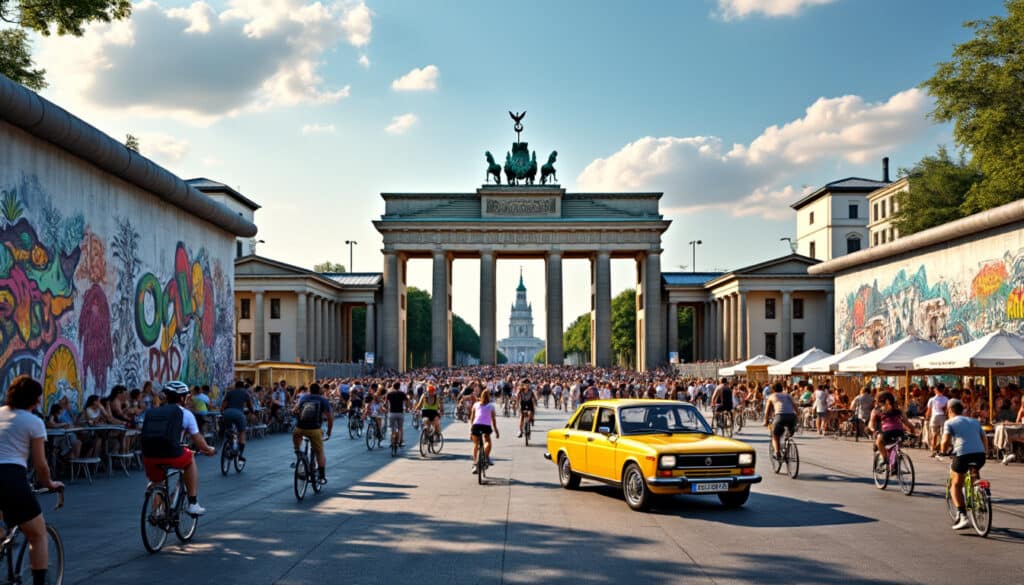
Fun Facts & Curiosities About Berlin
Berlin, a city of rich history and vibrant culture, never fails to captivate those who explore its streets. Renowned for its eclectic blend of old-world charm and contemporary vigor, Berlin is a treasure trove of fascinating facts and unexpected discoveries.…
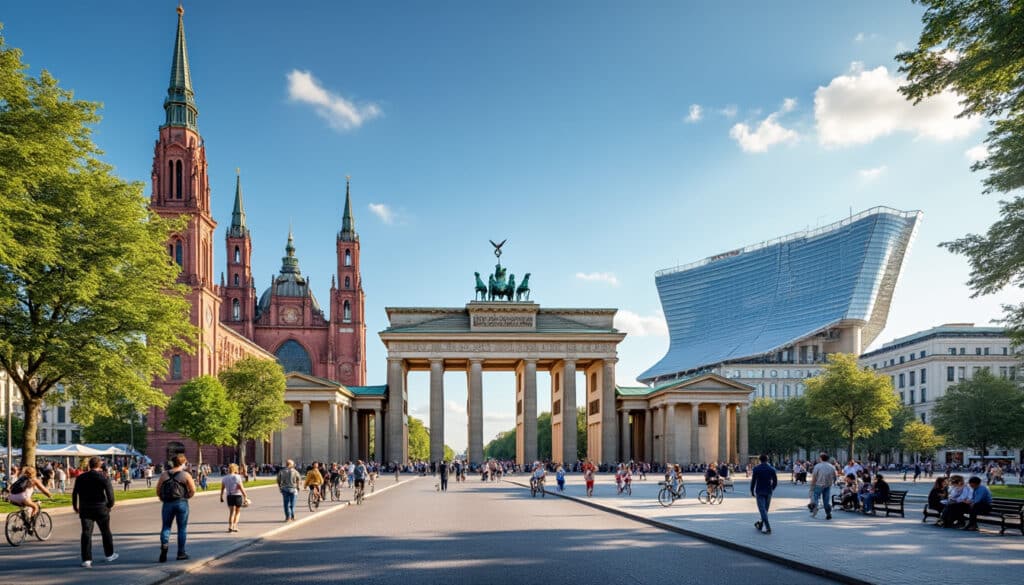
Architecture and urban features of Berlin
Berlin stands as a living testament to the intersection of architectural evolution and rich history. The city’s skyline is a mosaic of styles, reflecting its tumultuous and vibrant past. From the grandeur of the German Empire to the stark functionalism…

Berlin, a city that never stops moving, offers a multitude of experiences to its residents. From arts and technology to the vibrant nightlife, daily life in Berlin is both invigorating and diverse. For expats and locals alike, the city is…
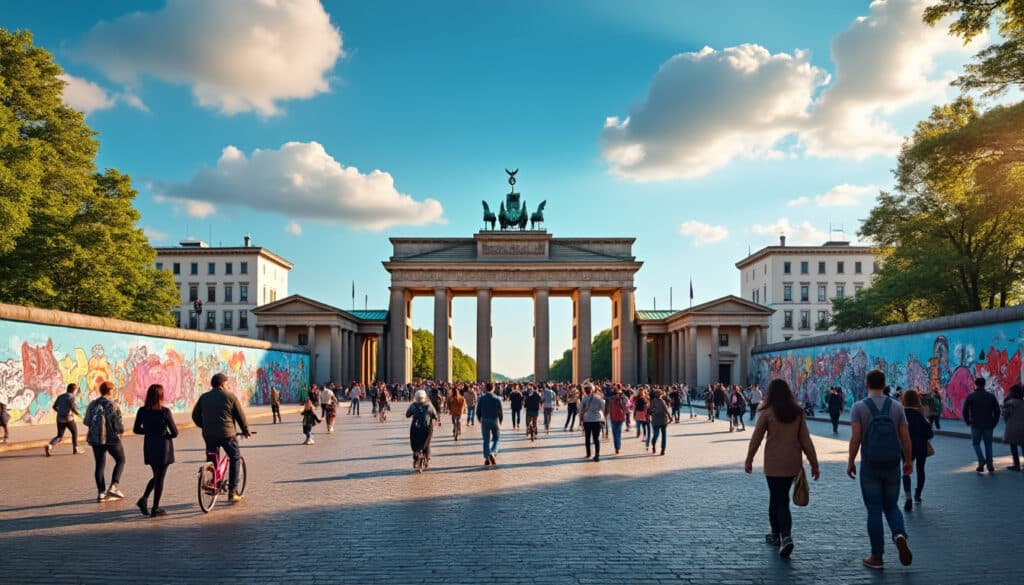
Demographics and geography of Berlin
Berlin, the vibrant capital of Germany, stands as one of Europe’s most intriguing cities, known for its rich history, diverse culture, and dynamic growth. As the largest city in Germany, it boasts a unique blend of historical significance and modern…
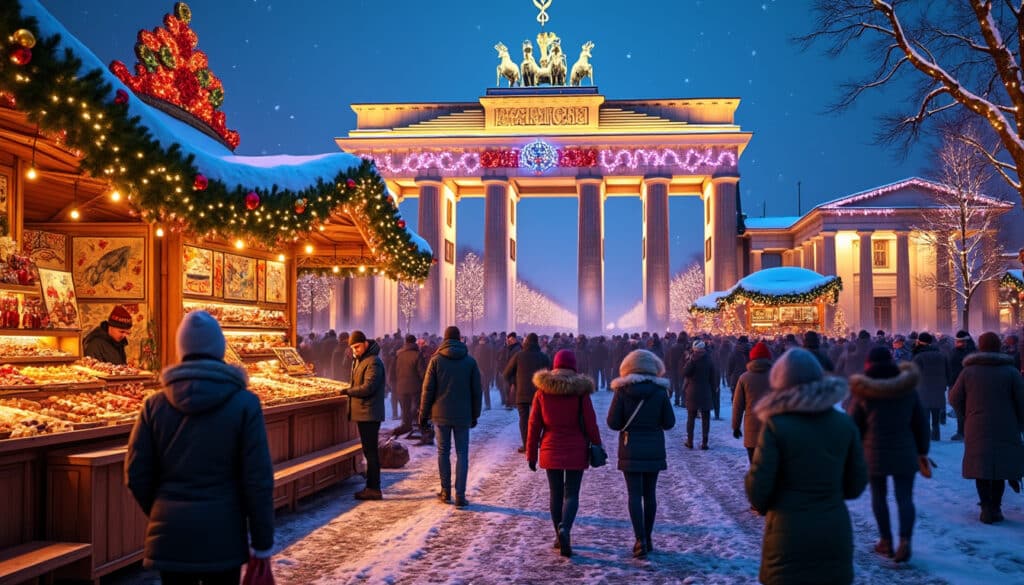
Holidays and celebrations in Berlin
Berlin, a city renowned for its vibrant cultural tapestry and energetic spirit, celebrates life through a diverse array of holidays and festivities. As one immerses in the lively pulse of this city, the celebrations not only reflect its deep-rooted history…

Language and spelling of Berlin
Berlin is not just Germany’s capital but also a hub of diverse cultures, traditions, and languages. With its blend of history and modernity, the city offers a unique linguistic experience. Travelers and residents alike are exposed to a rich tapestry…
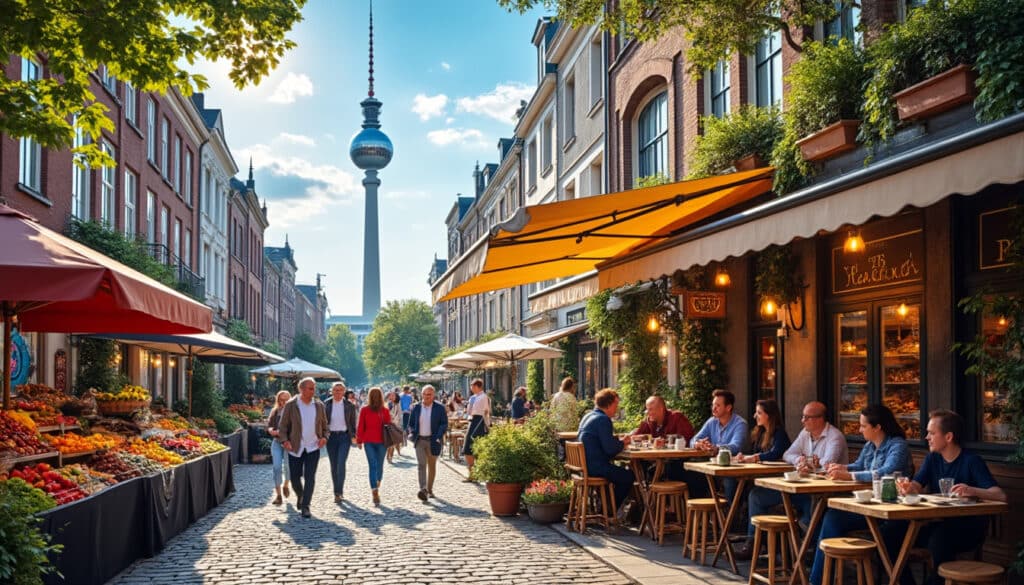
Local tips for tourists in Berlin
Berlin, the vibrant capital of Germany, is a city teeming with history, culture, and an unrivaled nightlife. While the must-see landmarks such as the Brandenburg Gate and the Berlin Wall are well-known, there’s a treasure trove of local secrets that…

Names, flags, and identity of Berlin
The city of Berlin, known for its rich history and dynamic urban life, stands as a testament to resilience and cultural diversity. From its iconic bear-emblazoned flag to the various names it has been associated with over centuries, Berlin’s identity…
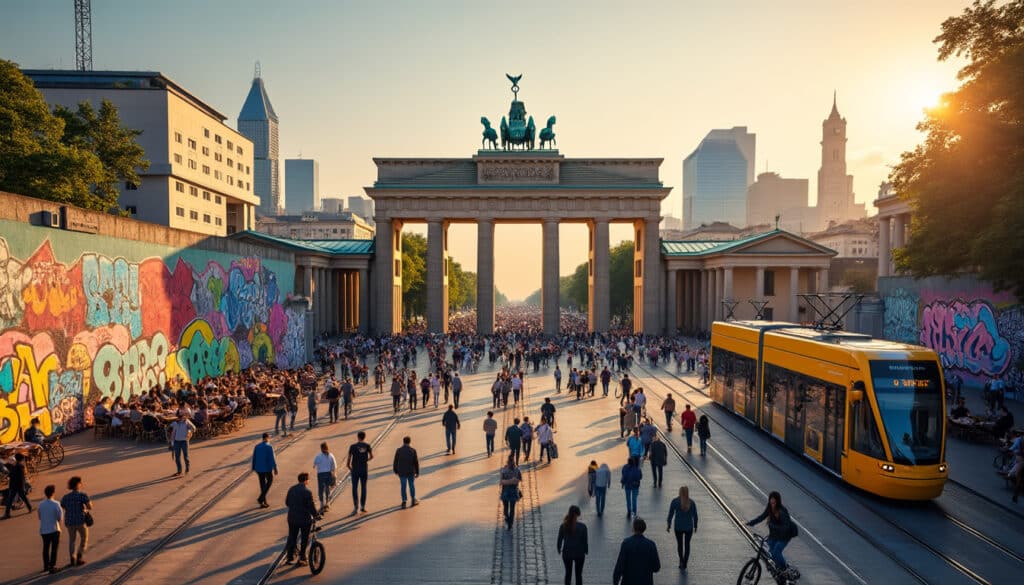
Reputation and identity of Berlin
Berlin, a city of transformation and dynamic culture, has sculpted a unique identity recognized worldwide. This vibrant metropolis offers a captivating blend of history, art, and contemporary life, shaping its reputation as a global cultural epicenter. From the iconic East…
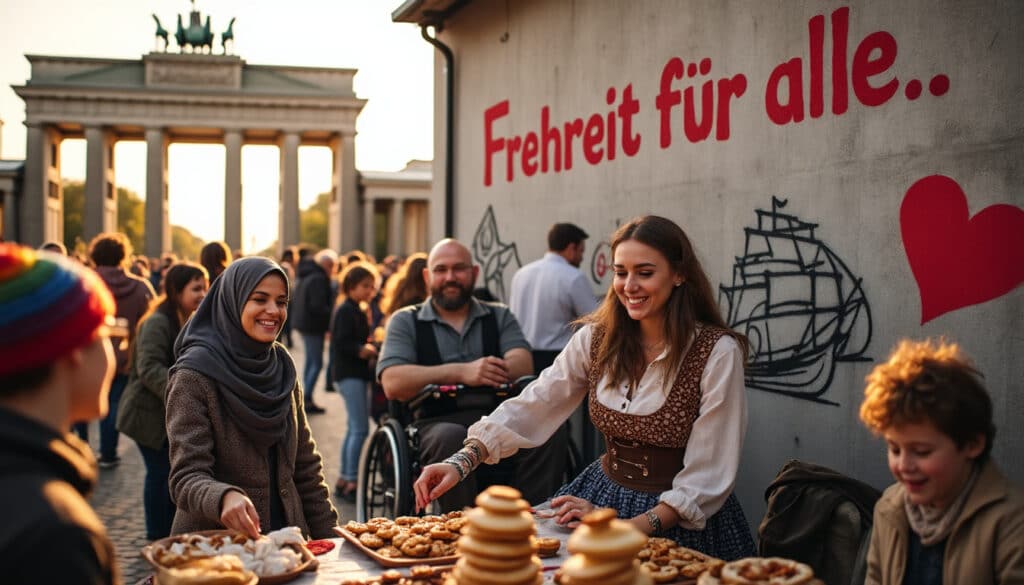
Unusual facts and social issues in Berlin
Berlin, the eclectic heart of Germany, pulsates with vibrant energy, drawing travelers and culture enthusiasts from around the globe. While its rich history and monumental landmarks often steal the spotlight, the city is peppered with quirky and intriguing facts that…

What does Berlin look, smell, feel like?
Berlin, the heart of Germany, is a city that tantalizes all senses. From its historic architecture to the dynamic street art, the pulse of Berlin is felt in every corner. Visitors are often captivated by the blend of vibrant city…


